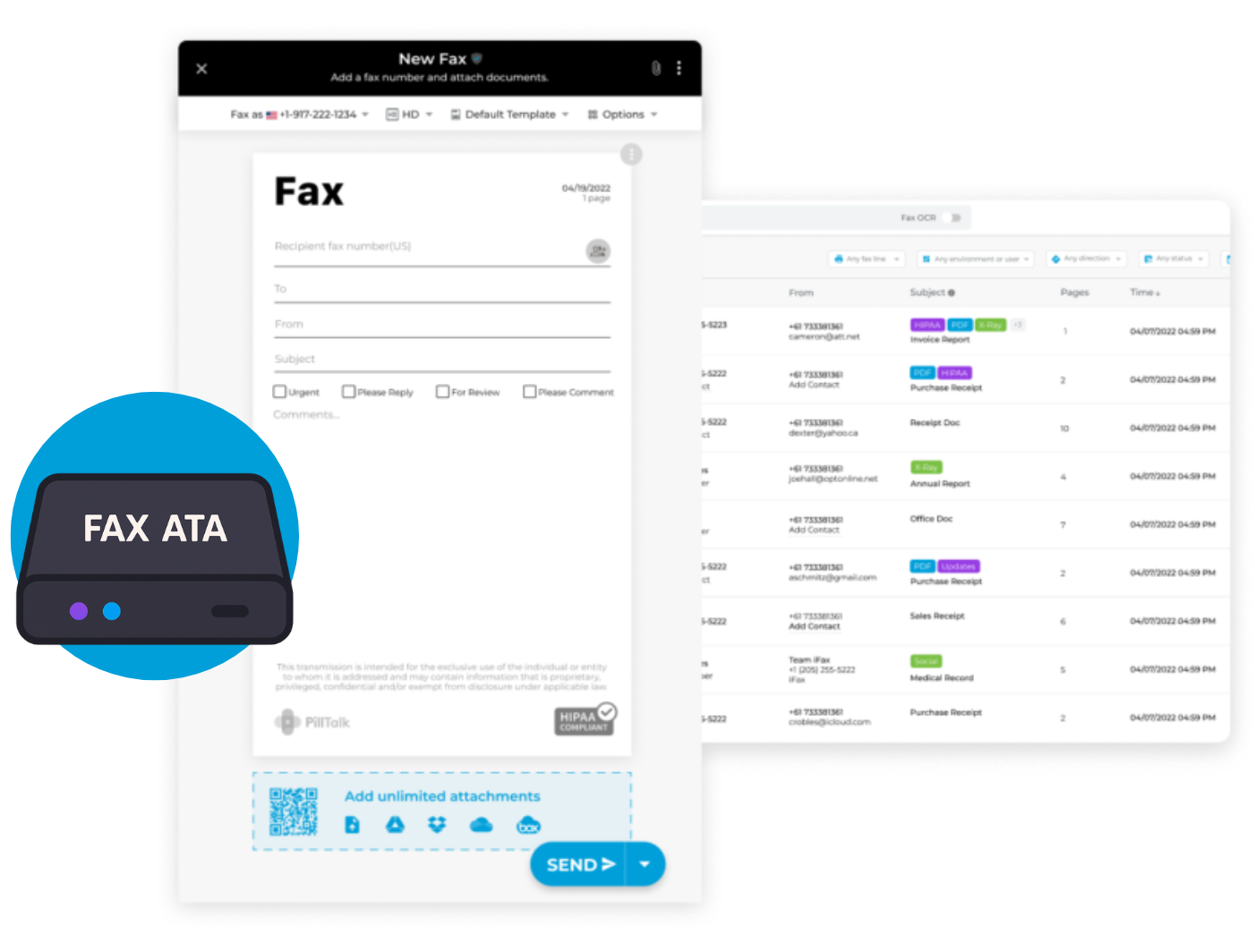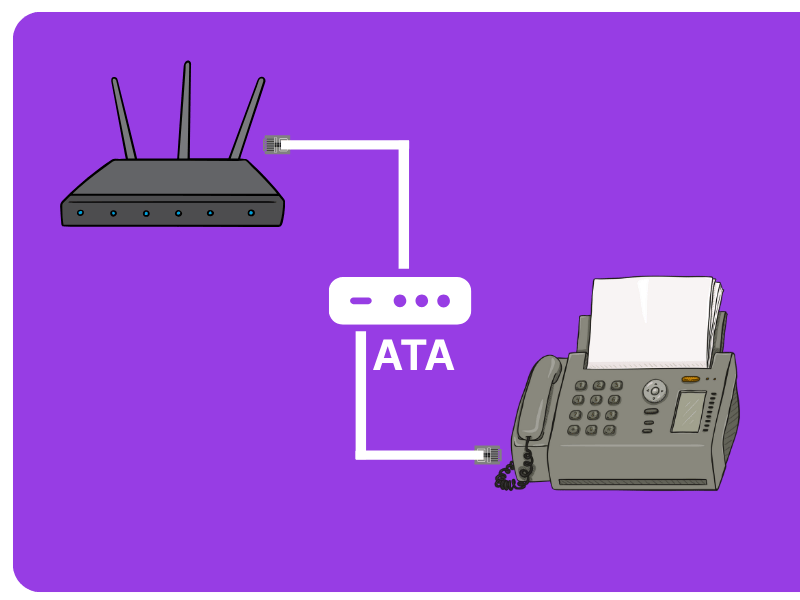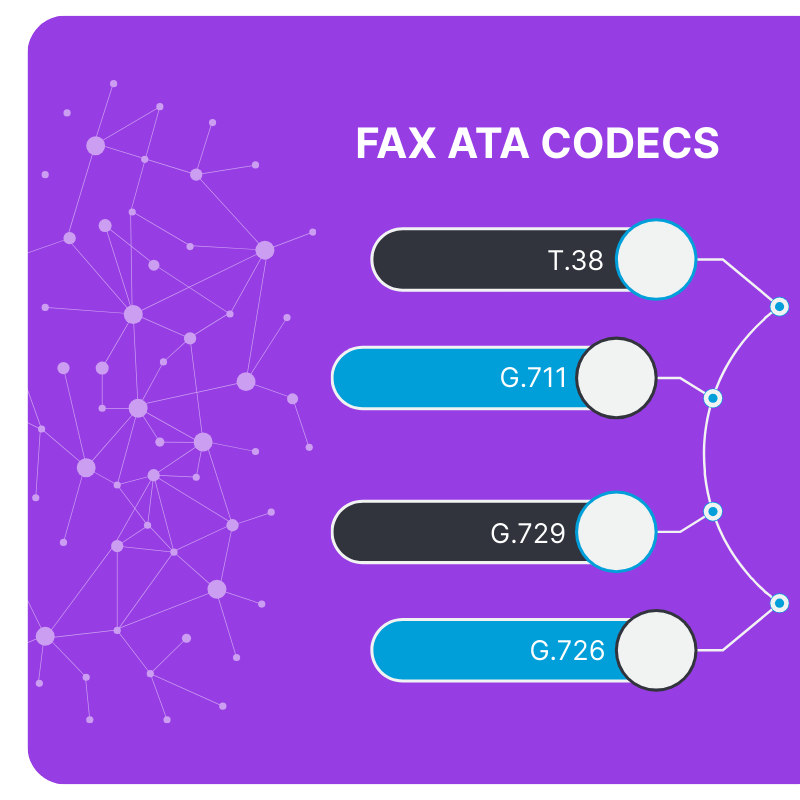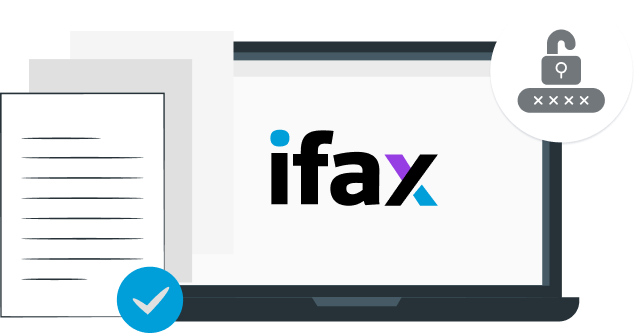Faxing With a
Fax ATA
- Keep your fax machine minus the phone line
- Affordable faxing over the Internet
- Fast, reliable fax delivery every time

Enjoy iFax services at 50% off!
Your discount will be applied during checkout.

Send ATA Fax From an Analog Fax Machine

Fax ATA stands for analog telephone adapter for fax. It enables a traditional fax machine to send and receive faxes using Voice over IP (VoIP) services rather than conventional analog phone lines.
It converts the fax machine’s analog signals into digital signals, enabling the transmission of faxes over a VoIP network. Say goodbye to copper switch-off worries. ATA faxing offers an alternative way to keep using fax machines.
Using an ATA adapter for fax is ideal in specific use cases, such as using an analog fax machine without a phone line.
Here are some general steps on how to send a fax with ATA:
Want a quicker and easier setup for faxing? Switch to iFax.


Choosing the correct codec for your fax ATA device is key to ensuring successful transmissions over VoIP.
Here are some standard Fax ATA codec options to consider:
iFax offers a more secure, scalable, and efficient faxing option without the physical lines or analog hardware.
With advanced features like AI-powered OCR, email-to-fax, and broadcast faxing, it’s the best choice for businesses looking for a better long-term fax solution.

Secure and Reliable
Send and receive encrypted faxes without any hardware or ATA fax adapter. Comply with GLBA, SOX, HIPAA, and other industry standards with peace of mind.
Convenient
Fax from anywhere using any computer or mobile device that connects to the Internet. Effortlessly integrate with existing CRMs, EHRs, and other business tools.
Affordable Plans
Fax in high volumes without fail while keeping costs low with scalable plans tailored to your specific business faxing needs. Start with a free trial or pay only $14.99 monthly.
Fax ATA Explained: Common Questions
ATA for fax is an analog telephone adapter for fax machines, allowing transmissions over internet-based VoIP (Voice over Internet Protocol) networks.
It bridges the gap between analog fax machines and digital communication systems.
While an ATA connects an analog device like a fax machine to a VoIP network, the quality and success of fax transmissions depend on several factors, including:
Here are some common reasons why your ATA fax fails to send:
ATA faxing is less secure than other alternatives, like digital faxing. Moreover, faxing over VoIP often doesn’t automatically guarantee encrypted transmissions unless the provider specifically supports it.
The lack of proper encryption or secure channels can make sensitive fax documents more vulnerable to interception, tampering, and other security breaches.
If security is a primary concern, consider switching to a digital fax service. iFax offers reliable and secure digital fax solutions that protect sensitive fax data while ensuring compliance with industry regulations like HIPAA, GLBA, and SOX.